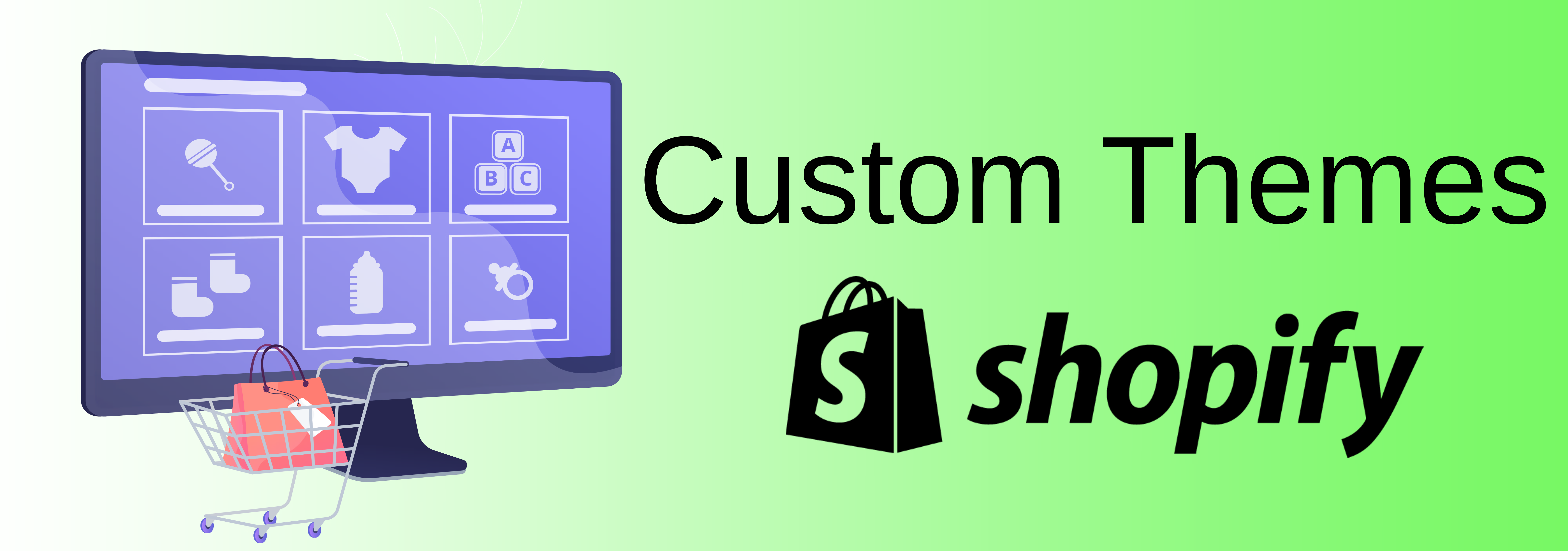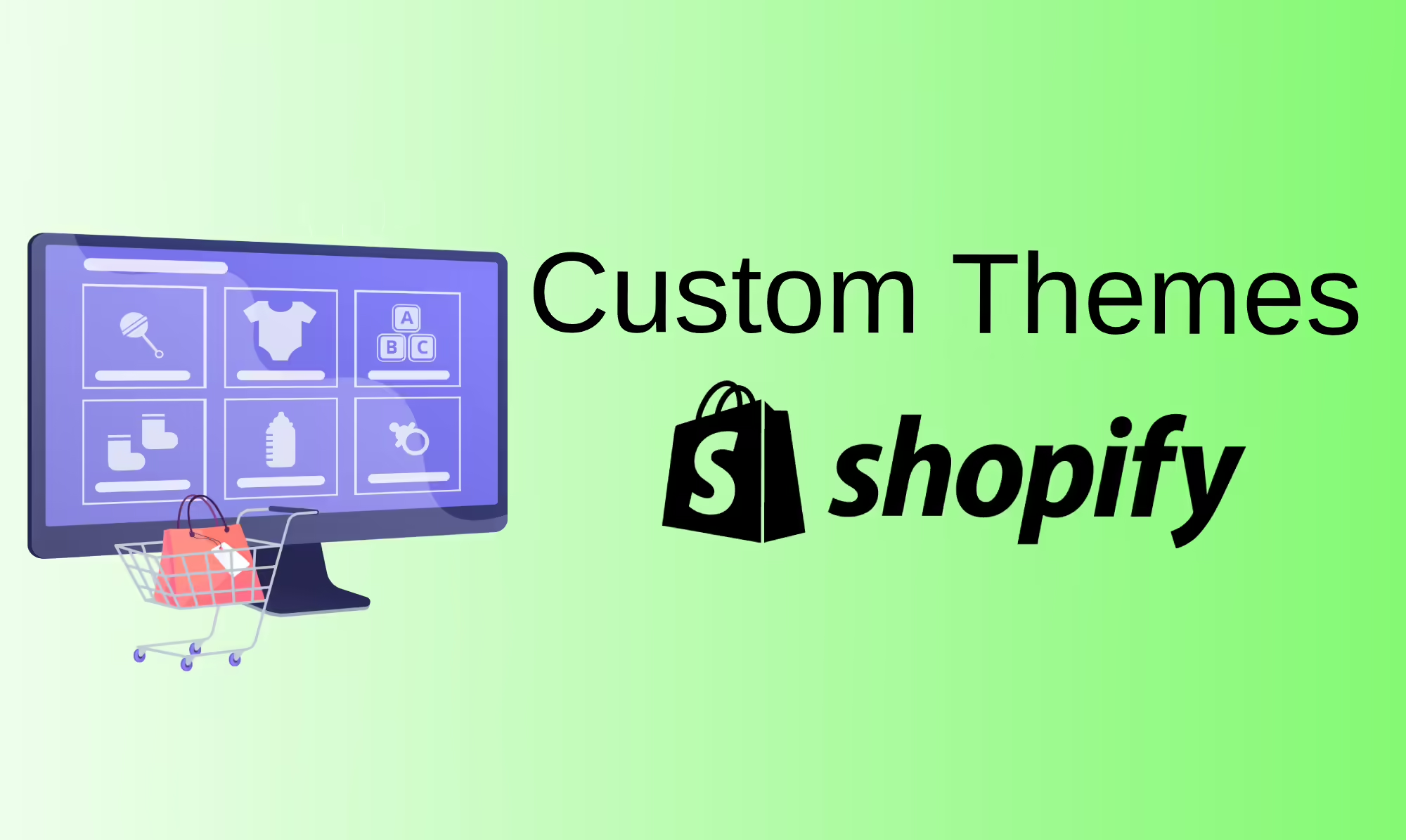
Shopify theme development involves creating custom designs and functionalities for online stores hosted on the Shopify platform. Unlike pre-built themes available in the Shopify theme store, custom themes offer unique branding, tailored user experiences, and specific features to meet the needs of individual merchants. By developing custom themes, designers and developers have full control over the appearance and functionality of Shopify stores, allowing for a truly bespoke online presence. This article leads to help you with all about Custom Shopify theme development. Let's learn in detail.
Table of Contents
What is a Custom Shopify themes?
Shopify themes are pre-defined templates to be used in your Shopify stores. It covers the functionality of the mass industry. To make your Shopify store standout, We would recommend to have a Custom Shopify theme. Custom Shopify themes are created using HTML, CSS, JavaScript, Liquid, and Shopify's proprietary templating language. This combination allows developers to create dynamic, responsive, and feature-rich store fronts that align with the customers' branding and requirements. So working on a custom Shopify theme leads to reduce third party dependencies and creating an optimized store.
Importance of Custom Themes for Shopify Stores
While Shopify provides a range of pre-designed themes that cater to various industries and styles, these themes may only sometimes fully meet every merchant's unique needs and branding preferences. Custom themes offer several key advantages:
- Branding Consistency:Custom themes enable merchants to maintain a consistent brand identity across their online store, aligning with their logo, color scheme, typography, and overall aesthetic.
- Tailored User Experience:By customizing the design and layout of their Shopify store, merchants can create a user experience that is optimized for their target audience, leading to higher engagement, conversions, and customer satisfaction.
- Unique Features and Functionality:Custom themes allow for the implementation of specific features and functionalities essential to the merchant's business model or industry niche. Whether it's advanced product filtering, integration with third-party services, or unique checkout flows, custom themes can be tailored to meet these requirements.
- Scalability and Flexibility:Custom themes provide a scalable foundation for growth, allowing merchants to add new features easily, update the design, or expand their product offerings as their business evolves.
Custom Shopify themes empower merchants to create a distinct online presence that sets them apart from competitors, establishes customer trust, and drives long-term success. As such, investing in custom theme development can be a strategic decision for businesses looking to maximize their impact in the highly competitive e-commerce landscape.
Getting Started with Shopify Theme Development
To embark on Shopify theme development, it's essential to set up a development environment that allows for efficient coding, testing, and deployment of custom themes. Here are the initial steps to get started.
Understand Shopify theme architecture
To design a Shopify theme, you need to understand how Shopify theme architecture functions. The placement of features, such as templates and sections, determines an online store's overall style and feel. In July 2021, Shopify launched an update called Online Store 2.0. The update introduced a new architecture for themes that increased customization options. It also introduced new developer tools that make developing custom Shopify themes and apps more accessible.
Shopify's update introduced JSON templates, making it easier to build themes from scratch. You can upgrade to Online Store 2.0 using Shopify's guide for new features and improvements. However, you can also use pre-update versions of themes, now called vintage themes, without any errors.
Shopify theme architecture
The standard directory structure in Shopify themes supports assets such as media, CSS, and JS files and can also be found in the directory. To make you learn about how each web page is managed within a theme, take a look at the image below: Shopify theme architecture can be divided into components as below:
- Layout:Know as the base of the theme, the layout can be reused as the base of the website—for instance, headers and footers.
- Templates:These components manage the content displayed on a webpage. Each page has a unique template type, which we will explain below. You can create variations of the same template type to customize each page according to your preferences.
- Sections:These are the components that can be reusable within the website. The "Image with text" section will be used for an Image with the side text and can be used with the options to customize its placement, colors, and more.
- Blocks:These are the content elements, and they can be media or text! You can add, amend, and restructure the sections using 16 blocks per section.
Correctly managing and implementing these components will help you create fully functional and highly responsive custom Shopify themes. What we love about custom Shopify themes is that you can customize everything, from placement to content and more, to match the brand personality.
Get familiarized with Liquid
Mate, To create a custom Shopify theme and become a Shopify expert, you must learn to use Liquid. Liquid is a language created by Shopify based on Ruby on Rails. They have made the efforts easy to learn and manage the liquid templates; familiarize yourself with it, and you can do as much customization as you want! Liquid simplifies custom Shopify theme development by acting as a placeholder for store data. Placeholders are replaced by store data when the theme is compiled, and Liquid elements represent webpage content
Template language uses HTML for static elements and Liquid for dynamic elements to populate webpages with data from Shopify. A Liquid file is a type of file that combines standard HTML code with Liquid constructs that use a simple, easy-to-read syntax. It can be identified by its unique liquid file extension. When creating custom Shopify themes, Liquid is used and can be easily recognized by its two delimiters:
- Double curly braces { { } }, which indicate output
- Curly braces with percentages {% %}, which denote logic.
Shopify crafted a resource library with tips and how-tos for beginners. Liquid is available on GitHub to download.
Use of JSON templates
In the 2021 update, Shopify revamped how sections function within theme architecture. To incorporate sections into your templates, you should utilize JSON template files. These files offer greater flexibility for refining your theme's appearance.
"sections": { "cart-items": { "type": "main-cart-items", "settings": {} }, "cart-footer": { "type": "main-cart-footer", "blocks": { "subtotal": { "type": "subtotal", "settings": {} }, "buttons": { "type": "buttons", "settings": {} } }, "block_order": [ "subtotal", "buttons" ], "settings": {} }, "featured-products": { "type": "featured-collection", "settings": { "collection": "all", "image_ratio": "square" } } }, "order": [ "cart-items", "cart-footer", "featured-products" ]JSON templates store data and a list of sections to be displayed along with their settings. You can easily add, customize, and rearrange sections directly from the "Customize theme" panel.
Name JSON templates according to specific Shopify template types, representing different content niches in your store. Shopify JSON templates support all template types except gift_card and robots.txt, which require Liquid files.
A template can only be present as either a JSON or a Liquid file, but not both simultaneously. If a Liquid file already exists, like product.liquid, you can't create product.json. However, you can create multiple templates for the same type, such as product.json or product.alternate.json. Each theme can have up to 1,000 JSON templates, with each able to render up to 20 sections. After publishing your custom Shopify theme, you can add sections to a template via code or the theme editor.
Take advantage of the tools
Shopify provides native tools for free that can make it easier to develop a custom Shopify theme. Shopify GitHub Integration is one of the essential tools for Shopify theme developers. It allows you to connect the Shopify store account to your GitHub repository and edit theme code while keeping track of changes. A Git repository for your theme provides version control and backup in case of errors. Changes to a theme in the admin panel are automatically saved to the Git repository.
Shopify Command-Line Interface (CLI)
Use Shopify CLI to develop custom Shopify themes post-Online Store 2.0. It is a command-line tool that helps in developing Shopify themes and apps. To install and run Shopify CLI, download Ruby, Ruby+Devkit, or Git based on your OS. Run 'shopify theme init' to clone a Git repository with an example theme. Run 'shopify theme serve' to preview and interact with your theme. Shopify builds a development theme in your theme library, deleted after seven days of inactivity or when you run 'Shopify logout.'
Dawn theme
"Dawn" is a Shopify example theme that uses Online Store 2.0 and JSON templates. It's mobile-first and optimized for speed, using CSS and native browser features to reduce weight. You can use it as a reference or starting point to build a custom Shopify theme. It's available in the Shopify Theme Store with an interactive demo.
Theme check
If you want to avoid any errors while creating custom Shopify themes, you can use a tool called Theme Check. Shopify has created it explicitly to check the Liquid and JSON files that make up the theme. Simply put, Theme Check is a linter that analyses the source code and identifies problems to help eliminate errors. Several issues that Theme Check can highlight in a theme code are:
- Liquid syntax errors
- Missing templates
- Unused variables and snippets
- Unknown and deprecated tags
- Excessive snippet nesting
You can run a theme check by using the shopify theme check command on Shopify CLI. Any errors found during a theme check will be displayed in your console with a link to the failed check's documentation. Additionally, you can write your own checks in Ruby and refer to them in your configuration file. This technique will help you create Shopify themes from scratch without any trouble.
Publish your custom theme
Publishing your newly created custom theme is a simple process. If the custom theme is connected to Shopify CLI, you can push it by running "shopify theme push". Otherwise, you can make the custom theme go live directly from your Shopify admin panel. Just follow these steps:
- Go to "Online Store".
- Click on "Themes".
- Locate your custom theme in the "Theme library" section.
- Click "Actions" > "Publish".
To publish a new theme on Shopify, preview it in a window on your screen. If you're satisfied with it, click "Publish". Your new custom theme will be displayed in the "Current theme" section, and your other themes will stay in your library.
What are the factors affecting Custom Shopify Theme Cost?
The cost of creating a custom theme in Shopify will depend on the time and effort you're willing to put into the project. It's best to hire professionals if you need more skills and knowledge to develop a custom theme.
Before estimating the price for custom theme development, you should understand the stages involved. Each stage requires professionals with different specializations. The approximate price range is based on the time to complete each phase and an average per-hour rate.
The following steps should be considered while creating a Custom Shopify theme:
- UI Design: The designer will create a full-color user interface (UI) design based on the wireframe. The UI designer creates and styles visual elements on every page, like menus/mega menus, buttons, and footers.
- Development: This stage takes the longest to complete. The developer must build your theme's every element and custom functionality from scratch. The time taken to create a custom Shopify theme relies on the theme architecture's complexity and chosen visual effects.
- Testing: Before implementing the new Shopify theme on the website, it must undergo quality assurance (QA) testing. QA testing ensures that your project meets the highest quality standards and is entirely bug-free.
Now that you know our workflow for designing a Shopify theme, you can assess the pricing for a custom Shopify theme.
How much does a Shopify custom theme cost?
As we shared earlier, the cost of custom Shopify theme development varies based on the professional expertise of the company you hire and the project requirements you provide. The preliminary factor influencing the price is the specialization of the development company you choose to create a custom Shopify theme. Fortunately, you have several options to consider. There are Web development agencies, e-commerce development agencies, Shopify Experts, and Shopify partners. Either of these agencies could help you with Custom theme development, and they vary based on the per-hour price they charge and their expertise. Like from typical web development agencies to Shopify experts, the price is gradually and their expertise too! You can balance out your overheads by working with any of these agencies.
Final Words
When choosing a theme for your e-commerce store, it's essential to ensure that it's visually appealing, contributes to stable performance, and encourages conversions. While pre-made themes from the Shopify Theme Store and other marketplaces are available, some businesses may need help finding a suitable option for their brand. Shopify allows merchants to create a custom theme tailored to their business's needs, which requires extensive knowledge of Shopify's theme architecture and coding skills. If you decide to create a custom Shopify theme, contact us to get started with your project.


